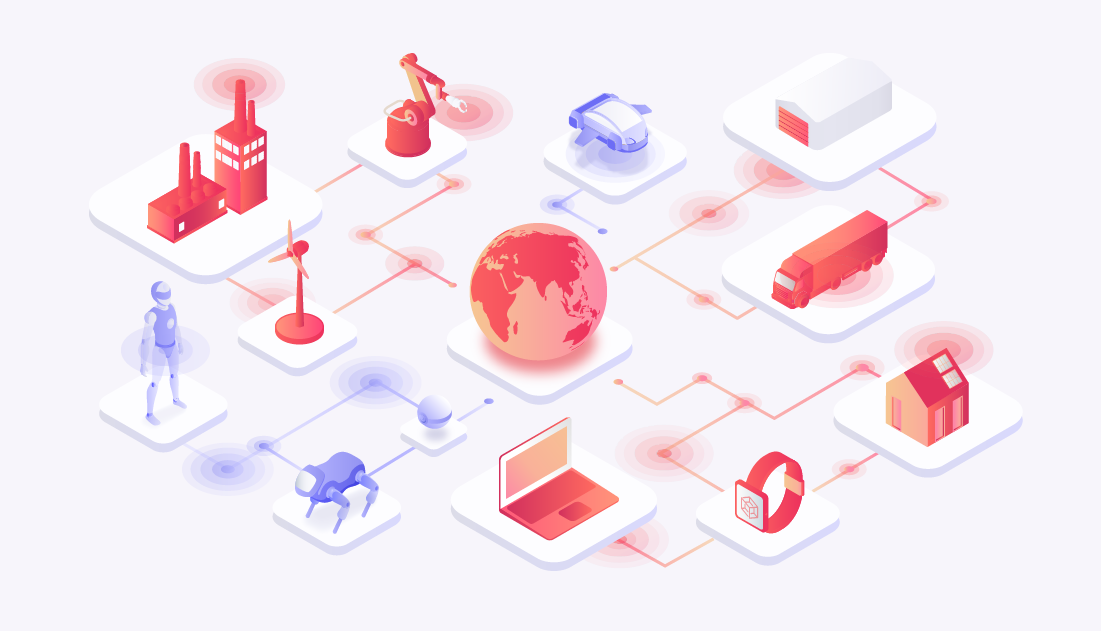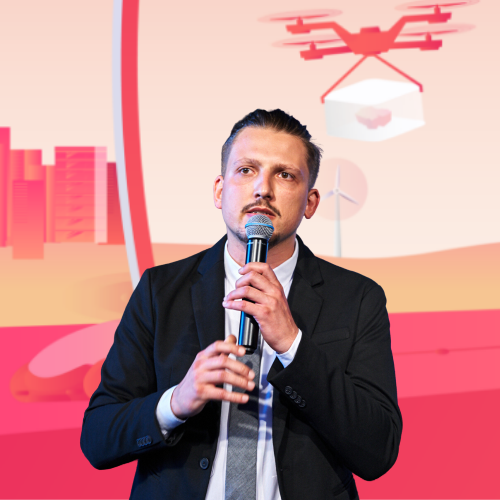
The world is producing greater amounts of data applied for increasingly smart applications which require massive amounts of processing and computing. These smart applications are utilizing a diversity of hardware with billions of connected devices in the world capturing and exchanging data in use cases across a spectrum of verticals. The Internet of Things has become nearly omnipresent in our environment. The new generation of smart IoT applications face challenges in legacy systems and require decision-makers to pursue optimizations to issues like latency, security, privacy, connectivity and cost.
A technology approach that is being increasingly implemented to deal with these challenges is edge computing. Edge computing companies are changing the way the world processes and handles data with solutions that localize computation closer to its source. Edge technologies decentralize and distribute computing to edge nodes on hardware devices themselves. This reduces the distance data must travel for processing which lowers latency. Lower latency creates the opportunity for greater precision, performance and efficiency. Edge computing companies empower more seamless and real-time data exchange which is essential for businesses rolling out emerging use cases that require high data exchange with low delay tolerance.
Another advantage of edge connectivity is that it allows for sending only necessary data to the cloud or operating off the cloud entirely. With less potentially sensitive data being exchanged between devices and the cloud, there is a reduction in security threats and an increase in reliability for businesses. There are also significant savings on cloud computing costs. Edge technologies can reduce the volume and complexity in interconnected systems for a simpler architecture to collect and analyze data. All these factors taken together provide a significant opportunity for companies to optimize both their business models and technological innovations.
The value delivered by edge computing companies in segments like software, services, edge managed platforms, and hardware is clear when looking at the exponential growth of the edge computing market.
According to the report by Grand View Research, the global edge computing market value was estimated at $4.68 billion in 2020 and is expected to grow at 38,4% from 2021 to 2028. Analysts predict that edge computing will account for 75% of enterprise data by 2025. New innovative edge computing companies are entering and working to compete in the market.
The demand for IoT device edge solutions is driven by businesses in verticals like industrial automation requiring machine-to-machine communication with remote-controlled and autonomous robotics delivering value in manufacturing and logistics. In verticals like smart city and energy, hardware devices like smart cameras are used for real-time exchange and processing of image recognition for transportation and production monitoring. There is also growing demand for edge computing in the medical vertical where hardware devices are smart monitoring patient health at scale.
Robotics And Predictive Maintenance Monitoring In Industrial Automation
In the vanguard of implementing edge computing solutions are businesses operating in the industrial automation sector. These companies are continuously optimizing their manufacturing processes leveraging robotics and intelligent devices for the highest degree of precision and greater environmental awareness using technologies like artificial intelligence.
Industrial automation businesses are using remotely operated and autonomous robotics that execute machine-to-machine communication between edge devices with low latency requirements are a natural use case for edge computing. These robotics and machines are also being monitored by smart devices and sensors which are using edge computing for processing and exchanging data for predictive maintenance analysis to ensure the machines are operating at the highest level of efficiency. Most advanced robots performing path planning or simultaneous localization and mapping are using the ROS / ROS 2 operating system with nodes that find each other on the same wifi network but remote robots can also be connected over the internet like described in our tech blog post.
Edge technology also mitigates threats around security and reliability while providing privacy for sensitive data like intellectual property and cutting-edge innovations. As manufacturers often operate on local servers and private networks there will also be significant savings opportunities on cloud computing costs as more computing is done at the edge.
Smart Devices Performing Real-Time Image Recognition In Smart City Transportation Grid
The smart city of tomorrow will also be an edge computing city with transportation and its associated smart grid providing many use cases. With the emergence of vehicle-to-vehicle (V2V) communication like platooning, cars and trucks will be performing segments of computing at the edge. This will be scaled up as vehicles begin communication with a spectrum of smart sensors and IoT devices embedded in a transportation grid. The smart devices will be performing data-intensive processing like image recognition monitoring of flows of traffic creating opportunities for significant automation and optimization of transportation and associated logistics. To make the correct and safe decision on the road, computing will need low latency for real-time data processing along with high reliability to ensure the smooth flow of goods and traffic.
Smart Monitoring In Medical & Energy Industries
Demand from the energy and medical businesses is also driving the growth of edge computing companies. Both have emerging innovations leveraging telepresence, remotely operated or autonomous robotics. For example, low latency and high reliability create the medical opportunity for a surgeon to remotely perform telesurgery with extraordinary precision on a distant patient in a life-saving procedure. Meanwhile, energy companies are using remotely controlled drones and robots for resource exploration in distant and challenging environments.
However, the large-scale applications of edge computation in these industries are IoT devices performing smart monitoring. Medical companies are using edge devices to monitor patients' health remotely, automate the delivery of care, and improve the speed and accuracy of diagnoses. By limiting the amount of data sent to the cloud and other technology brokers, edge computing also delivers greater privacy for sensitive patient data. In the energy vertical, smart devices are not only monitoring production in remote oil rigs and mines but also energy consumption with smart meters.
The P2P VPN Advantage
Many well-established enterprises like IBM, Intel and Cisco have also become edge computing companies developing and integrating software, services, edge managed platforms and hardware. A growing batch of startups and scaleups are releasing products for businesses’ edge tech stack.
Most of the edge computing happening today is operating via the extension of cloud services and functionalities to on-premise devices like Amazon greengrass and Azure Iot Edge.
There are well-known benefits to using cloud computing but there are also significant downsides which have been presented. Importantly, it is in the interest of cloud computing companies to process as much data from edge computing applications as possible. However, this may not always be in the interest of the businesses they serve. Despite the massive gains generated by edge computing, it is still highly dependent on cloud computing.
There is now a new way to further optimize the latency, security and privacy of cloud-dependent edge computing operations or even decouple from the cloud completely. This can be achieved with an innovative new edge connectivity solution: P2P VPN for IoT.
A P2P VPN delivers optimization for use cases that require cloud computing but receive value from a direct P2P connectivity network solution at the device edge that:
- Further lowers latency for delay intolerant applications.
- Connects to microcontrollers and low CPU devices that competitors can't.
- Can offload computing from a low computing device to a high computing device which is efficient in a closed P2P network but inefficient via the cloud.
Going further, for use cases like remote access that could benefit from decoupling from the cloud entirely but did not see a solution for this on the market, Husarnet’s P2P VPN delivers that alternative.
The Value Of Husarnet As A P2P VPN IoT Solution
Husarnet is an edge computing company with a tailored P2P VPN for IOT solution. The Husarnet Client is an edge computing connectivity technology that turns any devices into edge computing nodes by converting any of them to a directly, Internet-available server. Even if those devices operate behind firewalls, NATs and do not have public nor static IP. This provides both business and technology optimization opportunities for IoT companies in high data exchange applications with low tolerance for delays who want to optimize their edge computing infrastructure for lower latency and high privacy, security and reliability. Husarnet also offers the opportunity to do edge computing entirely independently of the cloud.
Business Value
By implementing Husarnet’s P2P VPN solution, businesses will achieve a variety of business benefits. First, the further reduction of latency will deliver greater precision and efficiency for expanded margins while the possibility for real-time data processing opens up new use cases and business models leading to growth opportunities. With security and reliability often at the top of the company leadership minds, the P2P VPN reduces exposure to technology brokers lowering vulnerability and threats to points of failure, maintenance time and IP exposure. The P2P VPN provides a solution to further reduce and optimize data sent to the cloud for cost savings to free up resources that can be utilized elsewhere. Husarnet’s solution is especially valuable to use cases that want to be independent of the cloud entirely and are eager for a low latency world.
Technology Value
Husarnet also delivers technology value. It has simple architecture and lightweight code. It is open source so businesses can see exactly what is inside. Husarnet functions over the public internet and is agnostic to internet linking technologies being compatible and serving as an additional layer of value with Wi-Fi, Ethernet, LTE and 5G. In addition, the Husarnet Client also offers full spectrum connectivity being compatible with devices like computers, robots, microcontrollers (like ESP32), sensors, and servers. Create a Husarnet account and try the P2P VPN in use cases like:
- Industrial Automation: Connecting remote robots over the internet using ROS2, Docker and VPN and not only in the same Wi-Fi network.
- Smart Monitoring: Remove a media server and directly access a camera streaming service running on the camera itself by Hosting WebRTC Server on IP Camera
- Remote Access: Access hardware device Raspberry Pi Remotely bypassing the cloud entirely






